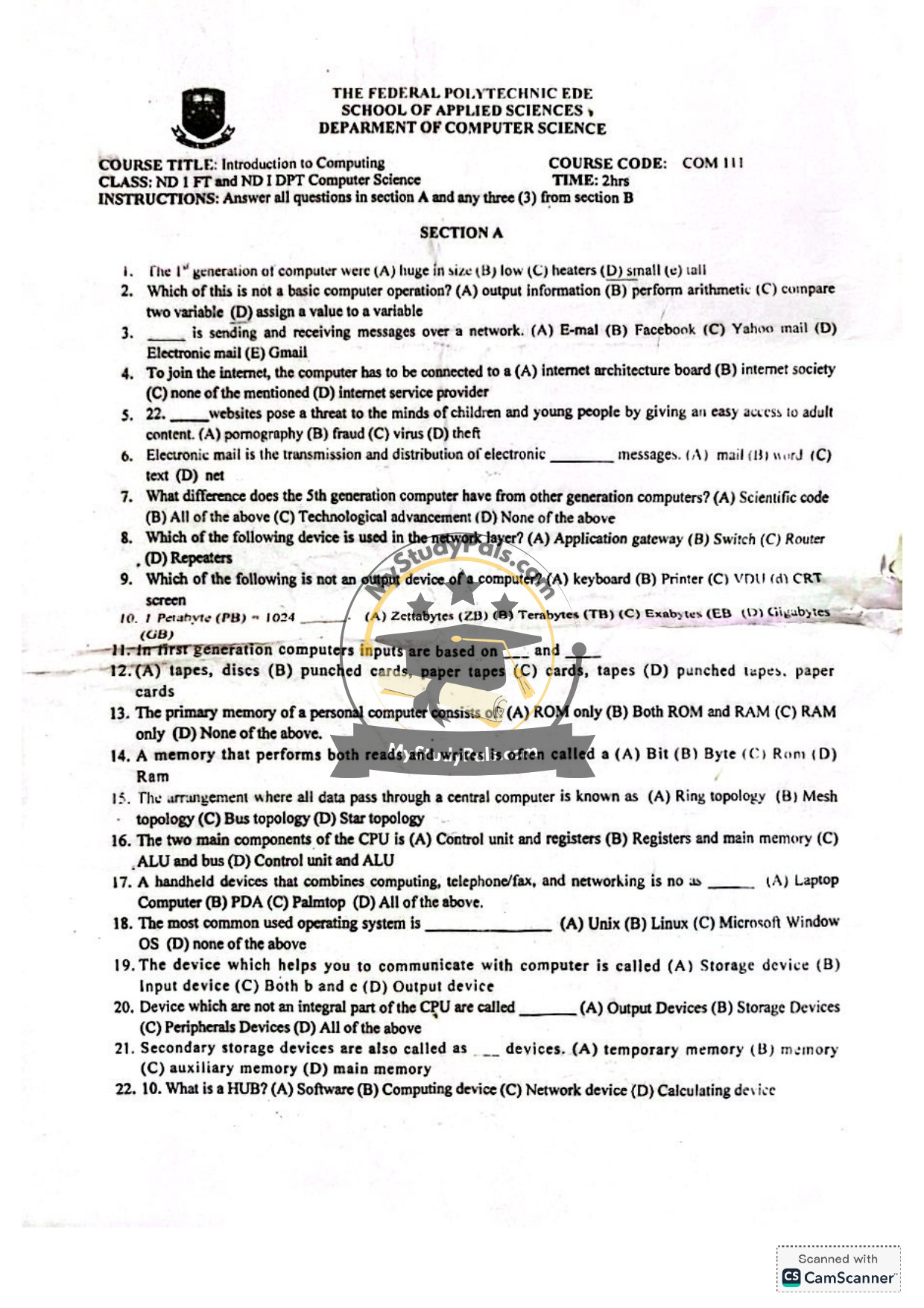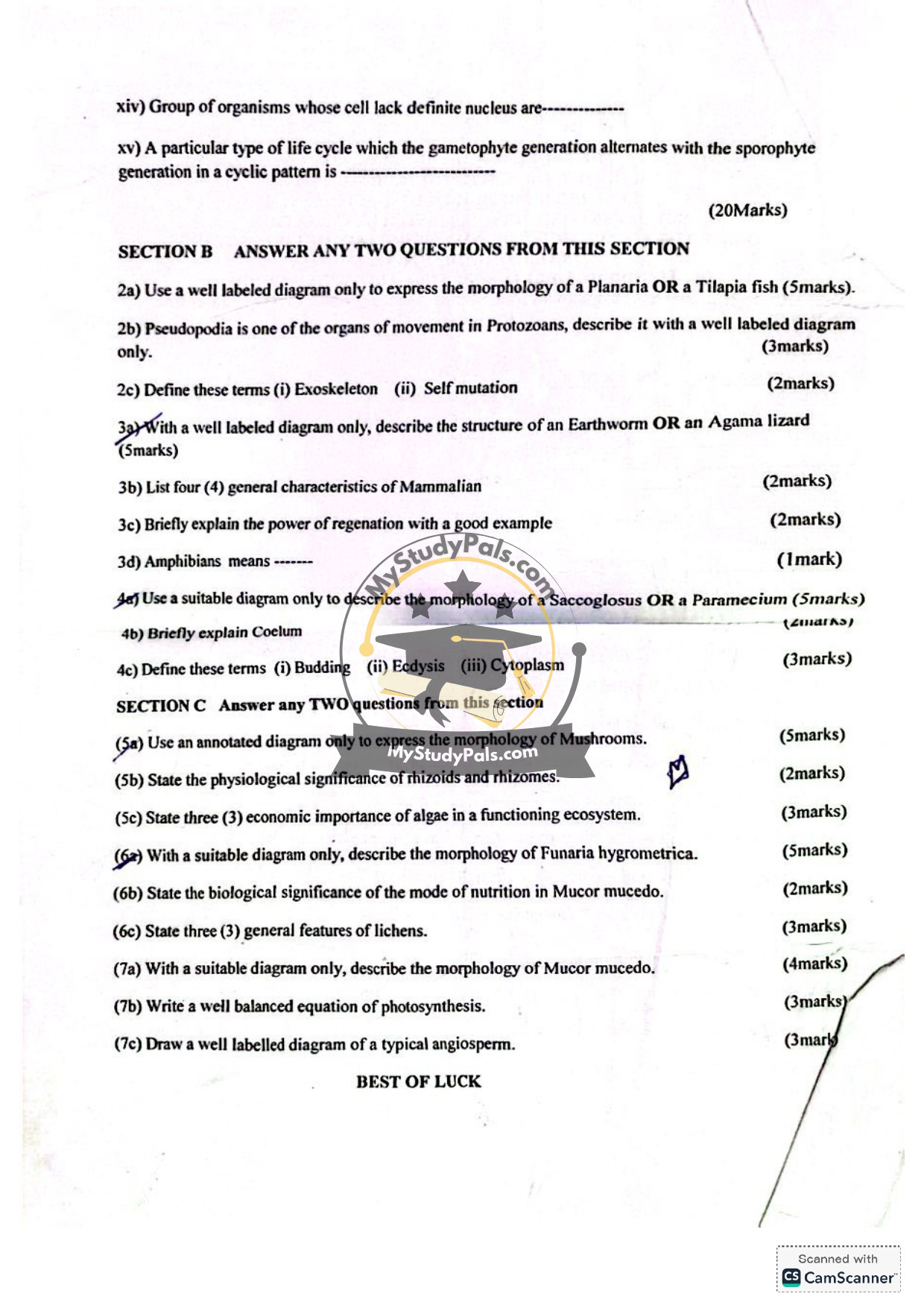ANWSER
SECTION A
Question 1:
The 1st generation of computers were (A) huge in size.
Question 2:
The operation that is not a basic computer operation is (D) assign a value to a variable.
Question 3:
Sending and receiving messages over a network is called (A) E-mail.
Question 4:
To join the internet, the computer has to be connected to (D) internet service provider.
Question 5:
Websites that pose a threat to children and young people by giving easy access to adult content include (A) pornography.
Question 6:
Electronic mail is the transmission and distribution of electronic (D) net messages.
Question 7:
The 5th generation computers differ from other generations because of (B) All of the above (Scientific code, Technological advancement, etc.).
Question 8:
The device used in the network layer is (D) Repeaters.
Question 9:
The device that is NOT an output device of a computer is (C) VDU.
Question 10:
1 Petabyte (PB) = 1024 Terabytes (TB).
Question 11:
First-generation computers’ inputs are based on (A) tapes, discs.
Question 12:
The primary memory of a personal computer consists of (B) Both ROM and RAM.
Question 13:
A memory that performs both read and write operations is called (D) RAM.
Question 14:
The arrangement where all data pass through a central computer is known as (D) Star topology.
Question 15:
The two main components of the CPU are (D) Control unit and ALU.
Question 16:
A handheld device that combines computing, telephone/fax, and networking is called (D) All of the above (Laptop, PDA, Palmtop).
Question 17:
The most common used operating system is (C) Microsoft Windows OS.
Question 18:
The device that helps you communicate with a computer is called (C) Both (Input device & Output device).
Question 19:
Devices that are not an integral part of the CPU are called (C) Peripherals Devices.
Question 20:
Secondary storage devices are also called (B) memory devices.
Question 21:
A HUB is a (C) Network device.
SECTION B
(Answer any two)
Question 2a:
Use a well-labeled diagram to express the morphology of a Planaria OR a Tilapia fish. (Draw the diagram accordingly).
Question 2b:
Pseudopodia is one of the organs of movement in Protozoans. (Describe with a well-labeled diagram).
Question 2c:
- Exoskeleton: A rigid external covering for the body in some invertebrate animals.
- Self mutation: The ability of an organism to alter its genetic material.
Question 3a:
Use a well-labeled diagram to describe the structure of an Earthworm OR an Agama lizard. (Draw the diagram accordingly).
Question 3b:
Four general characteristics of Mammals:
- Warm-blooded
- Have mammary glands for feeding young
- Give birth to live young (mostly)
- Have fur or hair on their bodies
Question 3c:
Regeneration is the process by which organisms replace or restore lost or damaged tissues, organs, or limbs.
Example: A starfish can regenerate its lost arm.
Question 3d:
Amphibians are cold-blooded vertebrates that live both in water and on land.
Question 4a:
Use a suitable diagram to describe the morphology of a Saccoglossus OR a Paramecium. (Draw the diagram accordingly).
Question 4b:
Coelom: A fluid-filled body cavity found in animals that provides space for organ development.
Question 4c:
Define these terms:
- Budding: A form of asexual reproduction where a new organism develops from an outgrowth of a parent.
- Ecdysis: The process of molting or shedding the outer layer in insects and reptiles.
- Cytoplasm: The jelly-like substance inside the cell that holds the organelles.
SECTION C
(Answer any two)
Question 5a:
Use an annotated diagram to express the morphology of Mushrooms. (Draw the diagram accordingly).
Question 5b:
The physiological significance of rhizoids and rhizomes:
- Rhizoids help in anchoring and absorbing nutrients.
- Rhizomes are underground stems that store nutrients and facilitate vegetative reproduction.
Question 5c:
Three economic importance of algae:
- Used as food supplements (e.g., Spirulina)
- Used in the production of biofuel
- Important in oxygen production in aquatic ecosystems
Question 6a:
Describe the morphology of Funaria hygrometrica with a suitable diagram. (Draw the diagram accordingly).
Question 6b:
The biological significance of the mode of nutrition in Mucor mucedo:
- Mucor mucedo is a saprophytic fungus that breaks down organic matter, recycling nutrients in the ecosystem.
Question 6c:
Three general features of lichens:
- Symbiotic relationship between fungi and algae
- Can survive in extreme environments
- Used as bioindicators of air pollution
Question 7a:
Describe the morphology of Mucor mucedo using a well-labeled diagram. (Draw the diagram accordingly).
Question 7b:
Balanced equation of photosynthesis:
6CO2+6H2O+Light→C6H12O6+6O26CO_2 + 6H_2O + Light \rightarrow C_6H_{12}O_6 + 6O_2
Question 7c:
Draw a well-labeled diagram of a typical Angiosperm. (Draw the diagram accordingly).



